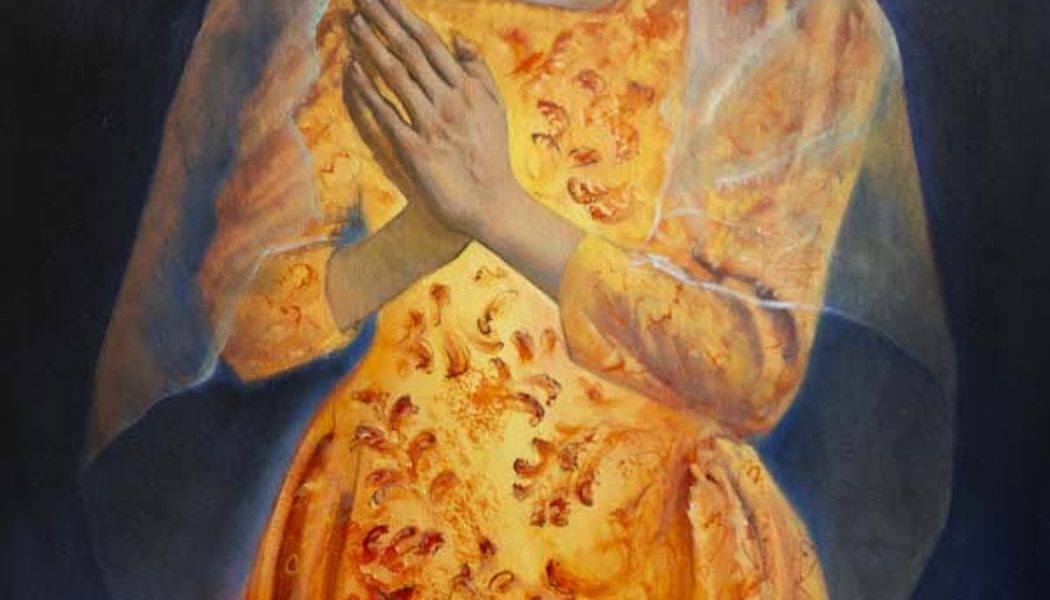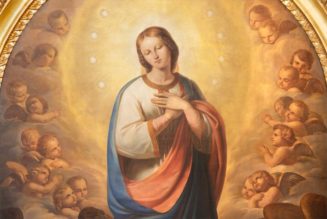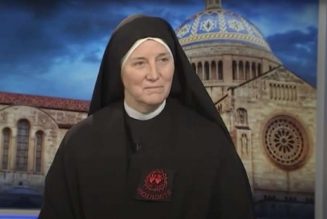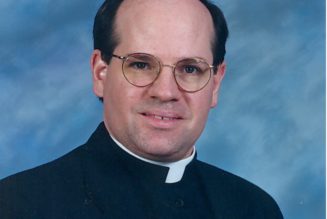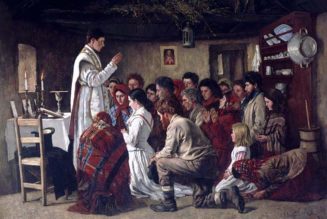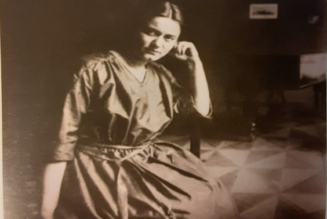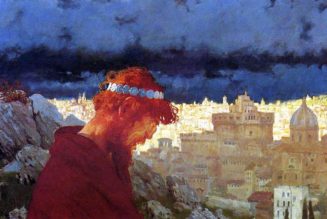Gwyneth Thompson-Briggs said her husband Andrew asked her after Mass, “Did you see the guy with Jesus hair?”
She did see him and had wanted to run after him, but she hesitated, and now she regrets it. He would have made a great model.
It was one leap she didn’t take, but only one.
Four years ago, she and her husband took a chance, and now she supports the family full-time with their home business, Gwyneth Thompson-Briggs Sacred Art. She mostly paints commissions and also teaches painting in person.
As a working mother and breadwinner, she’s something of an oddity in her community.
“In my parish, many of the mothers stay home full time, and the husband works. I try to explain to people we chose to have this small business of making sacred art because it allows us to live the liturgical year more fully,” she said.
As fulfilling as this life often is, it wasn’t easy to land there.
“To take that leap, God sort of had to put us in a situation where we lost a different job and we didn’t know what else to do. It didn’t seem prudent to try to raise a family on being an artist, but God knew we didn’t have the courage to do it without taking away the other options,” she said.
Thompson-Briggs said she looks to the medieval model of a family workshop, including apprentices who were part of the household.
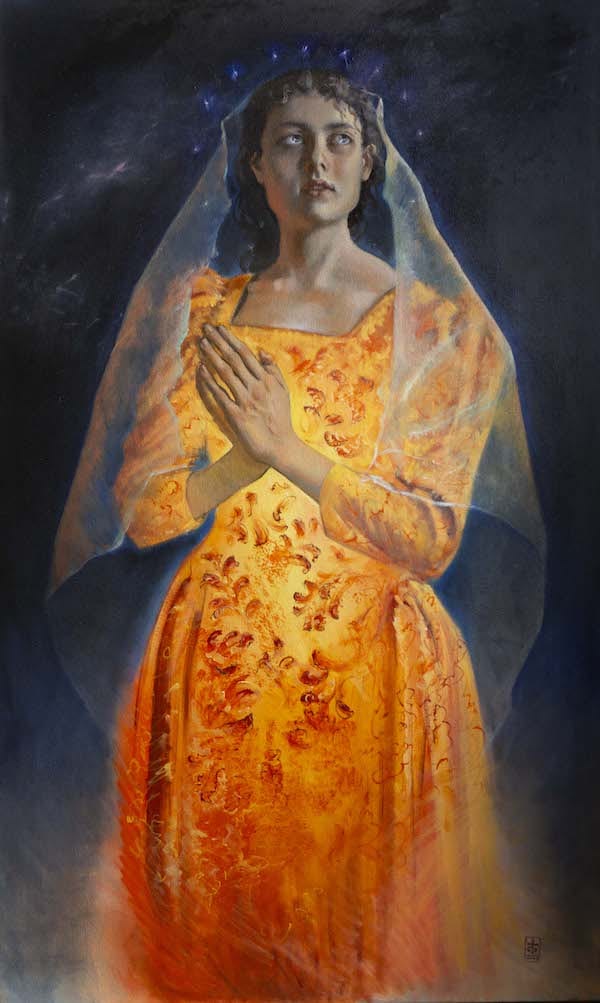

A very human life
“It seems like a very human life to live, that my children see their father throughout the day, and we’re always switching off with childcare and homeschooling and business duties. It’s a model I love, but it has been rare. It may be coming back, since everyone’s been working at home,” she said.
That “very human life” is a hallmark of Thompson-Briggs’ approach to art. Many of her live models, like the one with the Jesus hair who got away, are not professionals, but fellow parishioners at the church down the street from her studio.
“I will snag them and say, ‘Are you available to linger for an hour next Tuesday after Mass?’ and surprisingly, most people are amenable. I’ve gotten to have so many wonderful conversations. You meet so many people you think you know because you see the back of their head for months, and then you start to talk to them, and you’re always surprised,” she said.
The in-person conversation and time together give her visual insight an artist can’t attain by working from a photograph.
When you work from life
“When you’re working from a photo, you can get caught up in the detail. [But] when you work from life, you introduce the element of time. What’s the most natural way their head would tilt or that drape would fall?” she said.
As her model settles in and gets comfortable, her eyes also discern more breadth of color, more depth in shadow, and more atmosphere.
Her favorite models are good conversationalists, and she also acknowledges that talking helps keep them awake. Her studio heats up tremendously in the summer, and fans can only do so much when a model is draped in layers of wool.
Even their discomfort can be a revealing part of the artistic process, though.
“If you’re carrying something heavy in one arm, it’s going to affect the angle of the hips, or something,” she said.
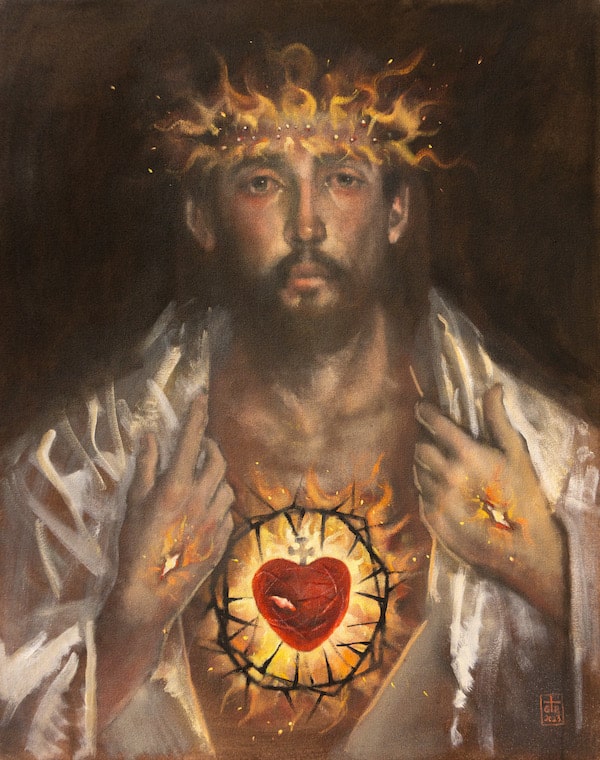

Art that assists the viewer in prayer
But because she is making sacred art, she is not trying to paint a recognizable portrait, but to assist the viewer in prayer; and so to portray a beloved saint, or Mary, or the Sacred Heart, she often uses three or four models, combining select elements from their various faces and bodies, hands and hair.
“Using multiple models allows me to approach the idealization of the saint who is a distinct personality, who is separate from all the reference models. Sometimes, I will transform someone, make them older or younger; other times, it’s a rare person who has really beautiful hands,” she said.
An intimate experience
But while each model is there in the studio, it’s an intimate experience. She recently posted on social media on day one of painting the Sacred Heart: “My heroic model came down to the studio for a couple hours on short notice after a long day of taking orders outside at Chick-fil-A. On top of that, he even held my fussy baby for a couple poses! Thank you, my friend.”
Thompson-Briggs, who has four children, ages 9 months, 3, 5, and 7, frequently shares these cozy little glimpses into her studio, including progress pictures of unfinished works. This is a deliberate effort to demystify the process of painting. “Sometimes I hear about artists putting a drape over their easel, but I want to remove a little bit of the mystique of painting. So many people don’t understand the process. When you only see a tiny reproduction of the famous beautiful paintings of the world, you say, ‘How can anyone make that?’ But when you see them partially finished, you see it does require skill, but it’s achievable,” she said.
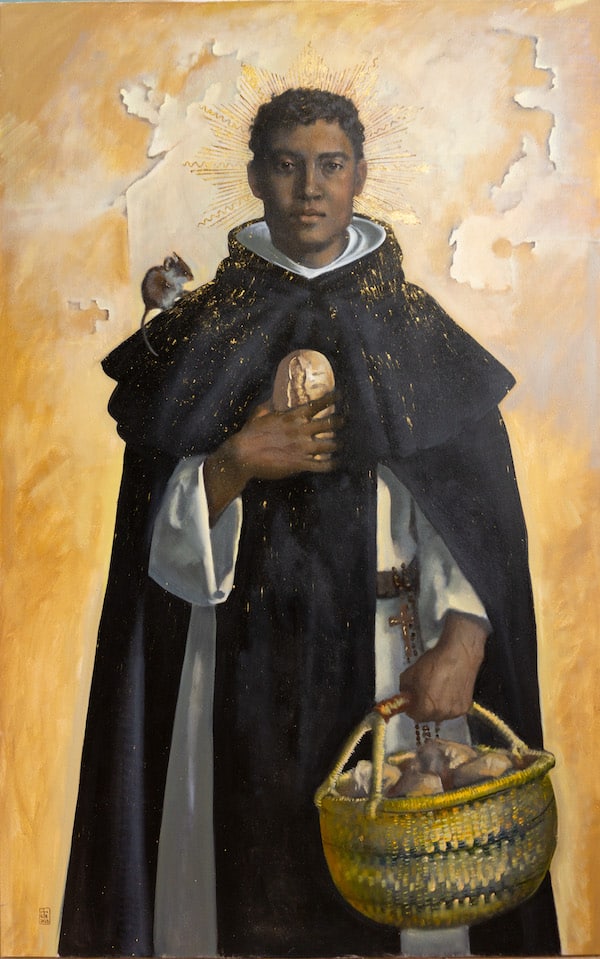

The making of an artist
Thompson-Briggs had been drawn to art since she was a child, and remembers poring over a volume of Janson’s History of Art. She remembers flipping impatiently over the dreary modern art and past the black and white plates, eager to find the color and the beauty of Renaissance and Baroque paintings. She recalls that, in her neighborhood, there were two women artists. One had a watercolor studio, and one worked on a full-sized loom.
“That example of seeing women who took their art seriously impressed me as a child,” she said.
Still, when she graduated high school herself, she couldn’t quite take the leap and go into debt to study art. Instead, she made the practical choice to earn degrees in physics and engineering.
She was miserable. By age 24, she decided to power her way through a private art school, and she emerged with a BFA a little over a year later, heavy with information about postmodernism, how the gallery system works, and “networking and schmoozing,” she said.
| Connect with Gwyneth Thompson-Briggs |
|---|
|
Thompson-Briggs’ recently completed Sacred Heart and Immaculate Heart paintings were recently featured in “For His Greater Glory” at the Artist Cooperative Gallery of Westerly, Rhode Island. Visit here to view oil paintings, watercolors and drawings that decorate churches, schools and private homes throughout the Americas and Europe. |
“We spent a semester on 1980 to the present, and two weeks on the entire Renaissance. I did learn about being a professional artist, but not about art. I had to pay off so many student loans, but I didn’t know how to paint,” she lamented.
In desperation, she got rid of most of her belongings and made another leap of faith, this time moving her whole life to New England to study under the painter Paul Ingbretson.
“I put everything in my Toyota and went for it, and I’m so glad I did,” she said.
“It was that joy of taking risks and embracing fully that I don’t know what God wants me to do, but I’m gonna do it,” she said.
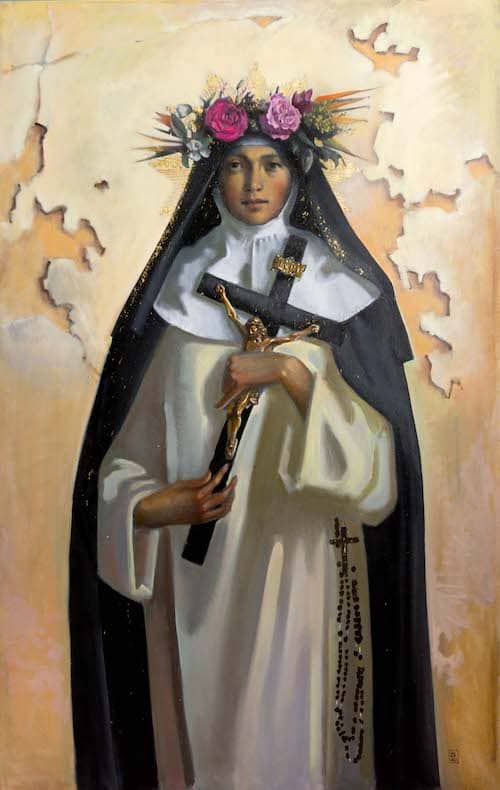

A little linseed oil
She was afraid she might already be too old (at the ripe age of 30) to learn much, but being older than other students made it easier for her to appreciate the opportunity more; and her painting skill blossomed.
She remembers one day in particular, when Ingbretson looked at her palette of paint and said, “Oh, your whites are too dry. You need a couple of drops of linseed oil.”
She added them, and everything changed.
“The paint flowed beautifully. I had been fighting this problem of stiff paint for years!” she said.
Because this master artist was devoted to transmitting his skill and was there in person to see what she was working with, he was able to teach her more than she learned in years of art school.
“Any professional artist today needs to feel a responsibility to pass on their craft to the next generation. So many of these skills cannot be transmitted by book or online. It has to be person to person,” she said.
Generosity
Thompson-Briggs said she can’t give thousands of dollars to some worthy cause, but she finds other ways to be a benefactor with the gifts she has. When people are generous to her, she tries to pass it along.
“I can contribute works on hand to a school auction, or right now I’m homeschooling a contemplative nun,” she said. She asked for donations online, and followers quickly donated the funds to pay for her books and materials.
That personal contact is irreplaceable, just as it was when her teacher glanced at her palette, added a few drops of linseed oil, and transformed her work.
“It has to be person to person. It needs to be part of this continual handing down, within the arts as well as all of Catholic culture,” she said.
“Have a dinner party, not a Zoom meeting. Write a letter as opposed to an email. There’s this warmth and transmission of personality and ideas that the medium really affects,” she said.
You show up, you make the commitment, and that’s when the good things really start to flow.
